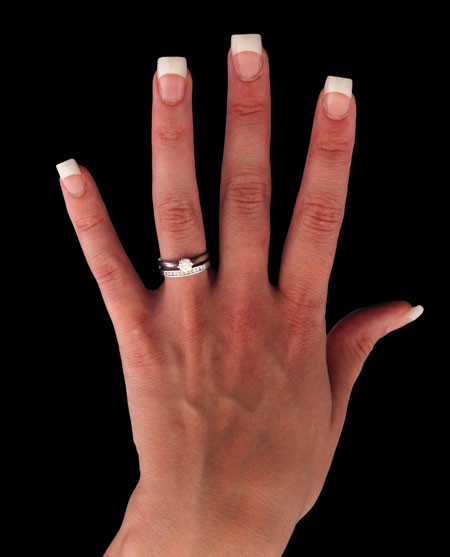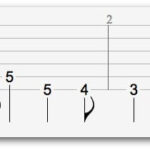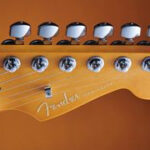 hand with long nails
hand with long nails
In a world where long, beautifully sculpted nails are a major fashion statement, you might wonder if your passion for guitar needs to take a backseat. Long gel or acrylic nails are undeniably eye-catching, adding flair and personality to your look. Adorned with intricate designs, sparkling embellishments, or trendy patterns, long nails are a fantastic way to express yourself.
However, if you’re also a guitar enthusiast, the question naturally arises: can you actually play the guitar, especially the electric guitar, with long nails? It’s a common concern. Long nails, while stylish, can seem like they’d be a hindrance when it comes to the precise fingerwork required for playing guitar. Everyday tasks can become trickier with longer nails, and playing guitar might seem like another activity destined for the “too difficult” pile. Perhaps you’re a nail technician, or simply adore the aesthetic of long nails. Does this mean your guitar-playing dreams are over?
Don’t give up just yet! The internet is full of inspiring examples, from viral videos of celebrities like Dolly Parton effortlessly playing guitar with her signature long nails, to countless other guitarists proving that nail length doesn’t have to be a barrier. These musicians demonstrate that with the right techniques and a bit of adaptation, you absolutely can strum your favorite tunes, regardless of your manicure.
Inspired by these examples? Let’s explore the different ways you can successfully play guitar even with longer nails.
Understanding Nail Length and Guitar Playing: When Are Long Nails Too Long?
Before diving into techniques, it’s important to define what “long nails” actually means in the context of guitar playing. What one person considers long might be perfectly manageable for another. Are you slightly overthinking a minor nail growth, or are you genuinely venturing into nail lengths that could pose a challenge? Let’s clarify.
Opinions on ideal nail length for guitarists vary widely. Some might consider nails extending just 2-4mm beyond the fingertip as “long,” while others reserve that term for nails that clearly protrude past the finger pad. Generally, most guitarists favor shorter nails because they offer more control and make fretting chords cleaner and easier.
Conversely, a significant number of guitar players find that long nails don’t significantly impede their playing. Some even argue that longer nails can assist in pressing down strings, reducing the effort required from the finger pads. This group has often spent time adapting their technique to accommodate their preferred nail length. There’s even a dedicated subset of guitarists who skillfully navigate the fretboard with fake or acrylic nails. They readily admit that mastering this takes time and consistent practice, but achieving proficiency is definitely a point of pride.
For the purpose of this guide, we’re focusing on playing guitar with nails that extend noticeably beyond the finger pads. The strategies outlined below are designed to help you overcome the potential obstacles long nails present, ensuring you can play chords cleanly and produce a solid sound without sacrificing your nail style. Get ready to take notes on effective methods to seamlessly blend your love for long nails with your passion for guitar!
How to Play Guitar with Long Nails: Effective Techniques
The fundamental challenge of playing guitar with long nails boils down to finger placement on the fretboard. Typically, you use the pads of your fingertips to press down on the strings, applying firm pressure to produce clear notes without buzz or unwanted vibrations. This explains why short nails are generally considered advantageous for guitar playing.
However, playing guitar with long nails, while undeniably more challenging, is far from impossible. With dedication and the right approach, you can absolutely master techniques that allow you to play beautifully even with acrylic or fake nails. It’s all about adapting and learning new strategies.
Here are several effective techniques to help you play guitar with long nails:
1. Master the Art of Fingerpicking
Fingerpicking is a fantastic guitar technique that becomes even more valuable when playing with long nails. Instead of using a pick for every strum, fingerpicking involves plucking individual strings with your fingers and thumb. This method is especially popular in genres like folk and classical guitar, and it offers a way to bypass the difficulties long nails can create with standard strumming techniques.
 hand with long nails
hand with long nails
When you traditionally strum with a pick, long nails can interfere with your grip, causing the pick to slip or rotate, which can be particularly frustrating and even embarrassing when performing. Fingerpicking eliminates the pick entirely, allowing you to use the tips of your fingers and thumbs to create melodies and rhythms. With long nails, you might even find that you can get a brighter, more articulate sound when plucking the strings.
Practice is key to mastering fingerpicking. Start with simple patterns and gradually work your way up to more complex arrangements. There are countless resources online and in guitar method books to guide you. Consistent practice will not only improve your fingerpicking skills but also build your confidence in playing guitar with long nails.
2. Utilize Your Nails as Natural Guitar Picks
If you enjoy strumming and prefer not to completely abandon using a pick-like approach, consider using your long nails themselves as natural guitar picks! Instead of holding a plastic pick, you can adapt your strumming technique to use the edge of your nails to strike the strings.
This method requires some adjustment, but it can be incredibly effective. Experiment with different angles and nail shapes to find what produces the best sound for you. You can even shape your nails to optimize them for strumming.
Here are some nail shaping tips to consider:
- Pointed Center Shape: Filing your nails to have a slightly pointed center can mimic the shape of a traditional guitar pick. This shape allows for a more focused and articulate sound, similar to using a pick. Ensure the sides leading to the point are symmetrical for a balanced tone.
- Rounded Nail Shape: If a pointed shape feels too extreme or uncomfortable, rounded nails can also work well. While different from a pick, rounded nails can produce a fuller, warmer sound when strumming.
- One-Sided Slope Shape: For a warmer, mellower tone, especially suitable for classical guitar styles, consider a one-sided slope. This shape allows for a softer attack on the strings. Experiment with the angle of the slope to find what feels and sounds best for your playing style.
By strategically shaping your nails, you can transform them into custom-made guitar picks, perfectly integrated with your fingers. This eliminates the hassle of holding a pick and can actually enhance your connection to the instrument.
3. Adjust Nail Length on Your Fretting Hand
When it comes to the fretting hand (the hand that forms chords on the fretboard), the primary challenge with long nails is pressing the strings down cleanly. As mentioned earlier, you ideally want to use the pads of your fingers to apply pressure. Long nails can prevent this, causing buzzing or muted notes if they hit the strings or fretboard.
One practical solution is to maintain a shorter nail length on your fretting hand while keeping your preferred length on your strumming hand. You don’t have to sacrifice long nails entirely! Focus on keeping the nails on your fretting hand trimmed to just at or slightly beyond the edge of your finger pad. This ensures your fingertips can make proper contact with the strings without interference from your nails.
This approach offers the best of both worlds: you can enjoy the aesthetic of longer nails on your strumming hand, which might even enhance your fingerpicking or nail-strumming techniques, while ensuring optimal playability on your fretting hand. Many guitarists who play with long nails adopt this strategy to maintain both style and functionality.
4. Explore Open Tuning Modifications
If you’re committed to keeping your nails long on both hands and still want to minimize fretting challenges, consider exploring open tunings. Open tunings involve tuning your guitar strings to different intervals than standard tuning (EADGBe). Common open tunings include open G, open D, and open E.
Open tunings can simplify chord shapes. In many open tunings, you can play chords by barring across all six strings, rather than forming complex finger shapes. This reduces the need for precise finger placement and pressure, making it easier to play with long nails.
For example, in open G tuning (DGDGBD), strumming all strings open produces a G major chord. Changing chords often involves moving a single finger or barre up and down the neck. This can significantly reduce the dexterity and finger pressure required compared to standard tuning, making it more forgiving when playing with long nails.
While open tunings require learning new chord shapes and scales, they open up a world of sonic possibilities and can be a fantastic workaround for guitarists with long nails. Many genres, such as blues, slide guitar, and folk music, heavily utilize open tunings.
Dolly Parton: A Legend Playing Guitar with Iconic Long Nails
Dolly Parton, a true icon of country music, is famous not only for her incredible voice and songwriting but also for playing guitar with her glamorous, long nails. She’s often asked about her secret to playing with such distinctive nails, and her approach is quite insightful.
Dolly Parton primarily relies on barre chords. Barre chords are formed by using one finger to press down multiple strings across a fret. This technique minimizes the need for intricate finger positions that might be hindered by long nails. She expertly positions her fingers to avoid nail interference, demonstrating that technique and adaptation are key.
Furthermore, Dolly Parton is known to utilize open tunings, particularly open E tuning. As discussed earlier, open tunings simplify chord shapes and reduce the need for complex fretting, making it easier to play with longer nails. Her mastery of barre chords and strategic use of open tunings showcase that it’s entirely possible to achieve a professional level of guitar playing without compromising on nail length. Dolly Parton is living proof that you can have both fabulous nails and fantastic guitar skills!
Conclusion: Long Nails and Guitar Harmony
Playing guitar with long nails is absolutely achievable. It might require adjustments to your technique and a willingness to experiment, but it’s far from an insurmountable obstacle. By incorporating techniques like fingerpicking, utilizing your nails as picks, modifying nail length on your fretting hand, and exploring open tunings, you can confidently play guitar while maintaining your preferred nail style.
The key takeaways are:
- Adaptation is crucial: Be open to modifying your playing style to accommodate your nail length.
- Practice is paramount: Consistent practice will help you develop the necessary muscle memory and precision.
- Experiment with techniques: Find the methods that work best for your hand shape, nail length, and musical style.
Don’t let long nails deter you from pursuing your guitar-playing aspirations. Embrace these strategies, dedicate yourself to practice, and you’ll be strumming and fingerpicking your favorite songs with style and confidence in no time!
Frequently Asked Questions
1. Can I play the guitar with acrylic nails?
Yes, playing guitar with acrylic nails is definitely possible. Many musicians, across genres, successfully play with acrylic nails. Some believe acrylic nails can even be advantageous for the strumming hand, providing a consistent and crisp attack on the strings, potentially even more so than finger picks.
2. Can I play guitar with fake nails?
Yes, you can play guitar with fake nails. The key factor is often nail length. If fake nails are kept at a manageable length, close to the finger pad on the fretting hand, they shouldn’t pose a significant problem. While some guitarists prefer natural, short nails, many successfully adapt to playing with fake nails through technique adjustments.
3. Does nail length affect guitar playing?
Yes, nail length can affect guitar playing, but it’s not a definitive barrier. Nail length primarily impacts fretting technique and strumming style. With practice, you can adapt to either long or short nails. Longer nails might require adjusting finger placement and pressure on the fretboard, while shorter nails might necessitate a different approach to strumming for desired tone and volume.
4. Is it better to play guitar with short or long nails?
There’s no universally “better” nail length for guitar playing – it’s largely a matter of personal preference and playing style. Most professional guitarists opt for shorter nails, particularly on the fretting hand, to maximize control and minimize fretting challenges. However, long nails can be effectively integrated into playing, especially for techniques like fingerpicking or using nails as picks.
5. Can you play guitar with short nails?
Absolutely, many guitarists play with short nails. For beginners, short nails on the fretting hand are often recommended as they simplify learning chords and developing proper fretting technique. While very short nails might initially produce a slightly softer sound when strumming without a pick, this can be easily compensated for with technique adjustments or by using a guitar pick for added volume and attack.
Author Box
The author of this post is Sarah Hansley.
Sarah is dedicated to empowering performers across the music industry. Her blog www.performerlife.com offers a wealth of resources covering diverse topics including DJing, Rapping, Voice Acting, and music production.


